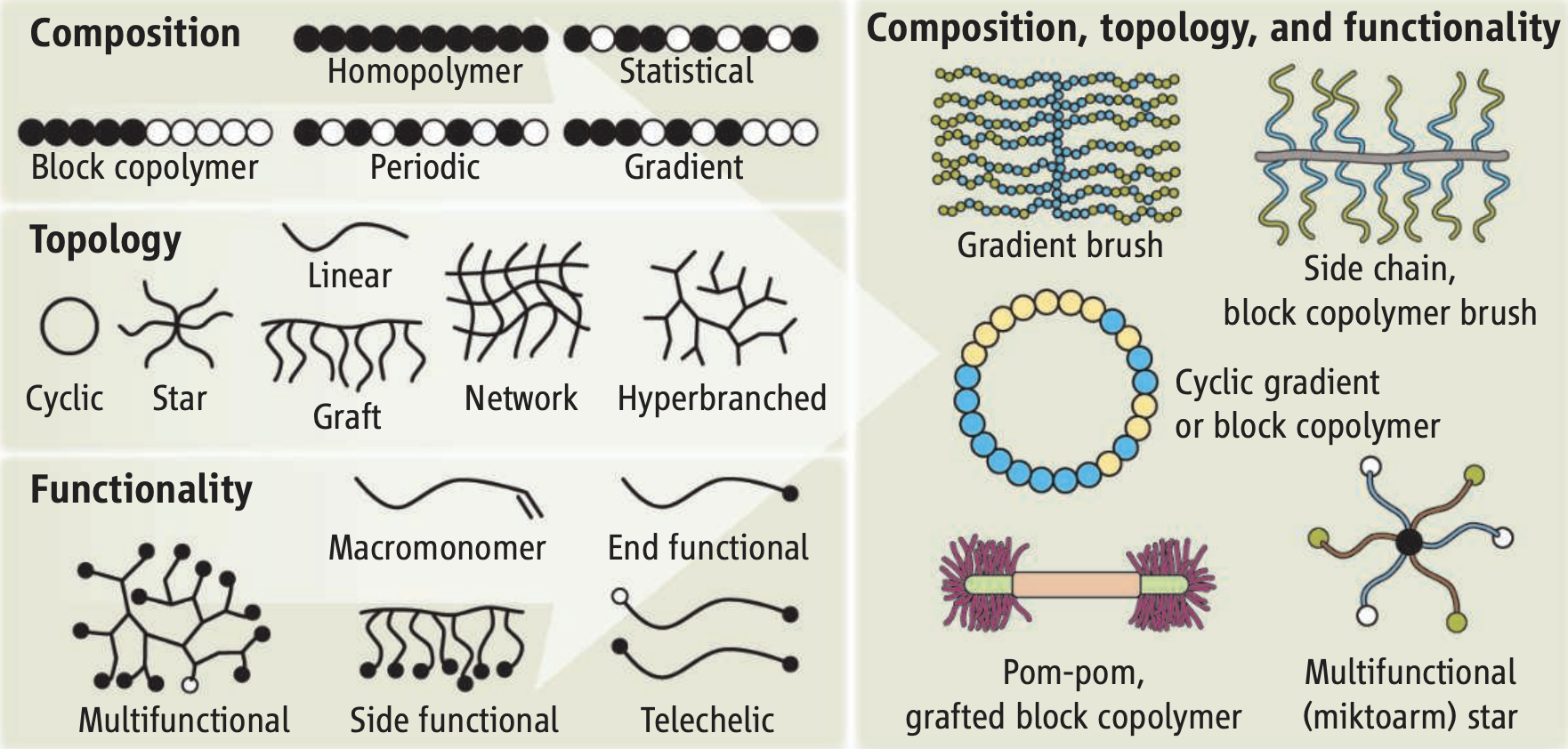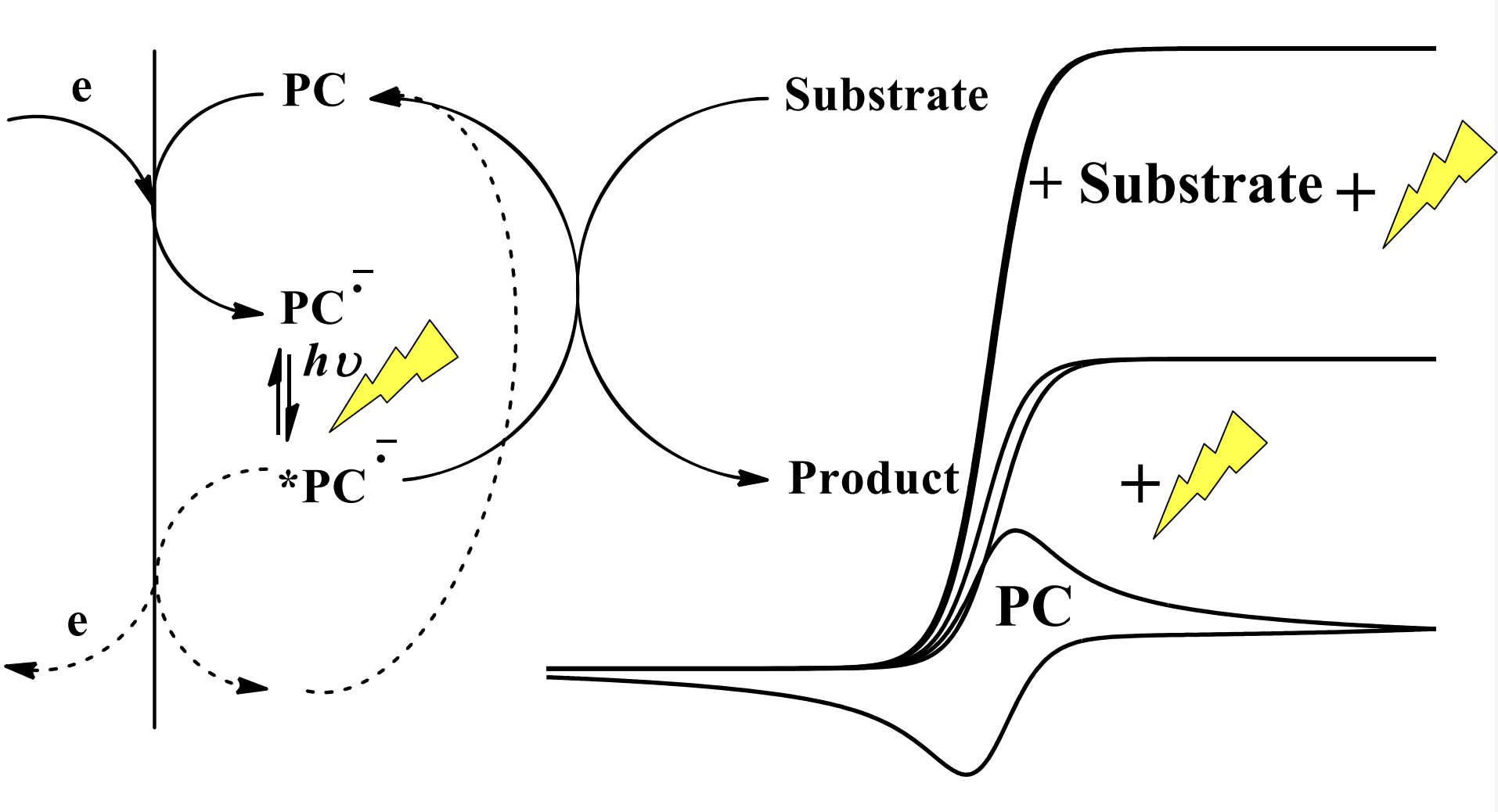
Controlled Radical Polymerizations
Controlled radical Polymerizations are the tool of choice to build advanced functional materials for all technological applications (biomedical, electronics, elastomers etc.).
The properties of polymers depend not only on their composition—the types of monomers used to synthesize them—but also on their topology. Differences in how polymer chains are connected within the molecule can lead to materials properties that vary for polymers made from the same monomer. For example, high-density polyethylene made with mostly linear chains and few branches is stiff and strong, and can be used for pipes. When made with many branching chains, it is more flexible and can be used in shopping bags.
In our Group, we develop new methods to perform controlled radical polymerizations in solution and on surfaces.

